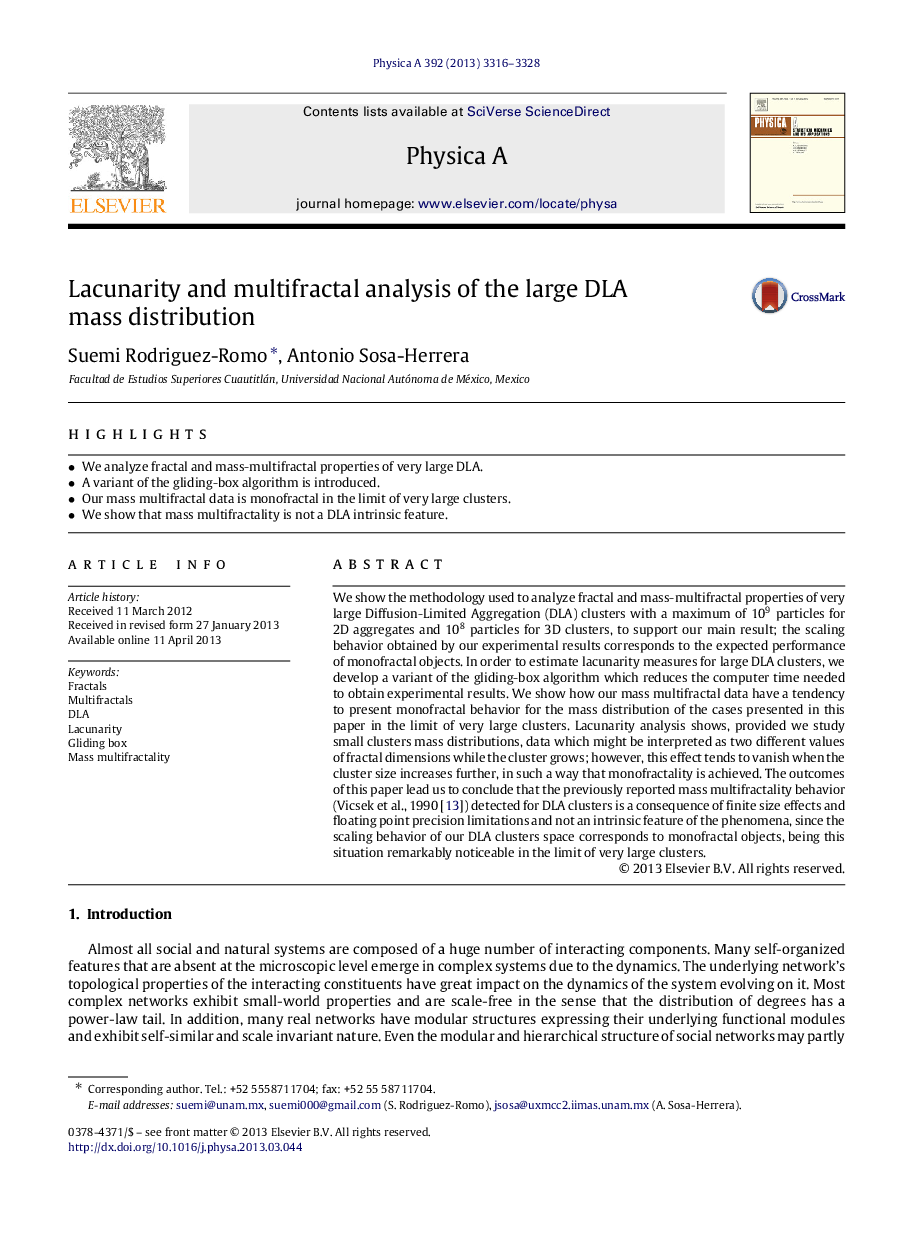| Article ID | Journal | Published Year | Pages | File Type |
|---|---|---|---|---|
| 10481676 | Physica A: Statistical Mechanics and its Applications | 2013 | 13 Pages |
Abstract
We show the methodology used to analyze fractal and mass-multifractal properties of very large Diffusion-Limited Aggregation (DLA) clusters with a maximum of 109 particles for 2D aggregates and 108 particles for 3D clusters, to support our main result; the scaling behavior obtained by our experimental results corresponds to the expected performance of monofractal objects. In order to estimate lacunarity measures for large DLA clusters, we develop a variant of the gliding-box algorithm which reduces the computer time needed to obtain experimental results. We show how our mass multifractal data have a tendency to present monofractal behavior for the mass distribution of the cases presented in this paper in the limit of very large clusters. Lacunarity analysis shows, provided we study small clusters mass distributions, data which might be interpreted as two different values of fractal dimensions while the cluster grows; however, this effect tends to vanish when the cluster size increases further, in such a way that monofractality is achieved. The outcomes of this paper lead us to conclude that the previously reported mass multifractality behavior (Vicsek et al., 1990 [13]) detected for DLA clusters is a consequence of finite size effects and floating point precision limitations and not an intrinsic feature of the phenomena, since the scaling behavior of our DLA clusters space corresponds to monofractal objects, being this situation remarkably noticeable in the limit of very large clusters.
Keywords
Related Topics
Physical Sciences and Engineering
Mathematics
Mathematical Physics
Authors
Suemi Rodriguez-Romo, Antonio Sosa-Herrera,
